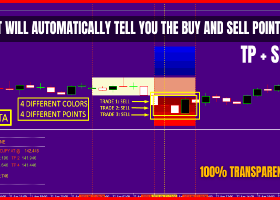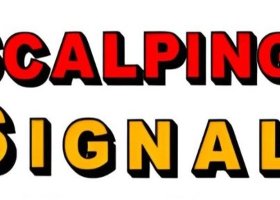Is Stop Loss a Scam: The Hidden Truth Behind Retail Trading Losses
Introduction: The Great Stop Loss Deception
If you've been trading for a while, you've probably been told that setting a Stop Loss (SL) is essential to protect your capital. Brokers, trading courses, and even some "successful" traders on YouTube swear by it. But what if I told you that Stop Loss is a tool designed to make you lose money rather than protect it?
I've been trading for years and have seen firsthand how SL is nothing but a trap that ensures retail traders keep losing. Meanwhile, institutions and market makers thrive by manipulating price movements. If 90% of retail traders lose money, and most use SL, doesn’t that tell you something?
How the Market Uses Stop Loss Against You
1. Stop Hunting: The Broker’s Favorite Game
Have you ever noticed that price often hits your SL before moving in the intended direction? This isn’t a coincidence—it’s called stop hunting.
Large institutions and market makers know where most retail traders place their SLs. They intentionally push the price to those levels, triggering your loss, before moving the price back in the original trend. This ensures that retail traders get wiped out, while big players collect their liquidity.
2. The Spread Factor: Your Hidden Enemy
Even if price doesn’t technically reach your SL, the spread alone can take you out.
During volatile times, spreads widen significantly.
Brokers manipulate spreads to trigger SL levels before price reverses.
Since SL gets executed at market price, you often lose more than planned.
This creates a scenario where you’re at a constant disadvantage, while brokers and market makers profit from your losses.
The Alternative: Why Ignoring Stop Loss Makes Sense when trading currency
1. Currencies Rarely Crash Like Stocks
Unlike stocks or crypto, currency pairs are backed by entire economies.
Major currency pairs (EUR/USD, GBP/USD, USD/JPY, etc.) rarely move in one direction forever.
Even if a trade goes against you, it’s highly likely the price will return—sometimes within hours, sometimes days.
Instead of taking unnecessary losses due to SL, patience allows price to correct itself.
2. Managing Risk Without SL
The key isn’t using a Stop Loss—it’s controlling risk properly.
Start with $1,000 to $10,000 as initial capital.
Risk only 0.1% to 0.5% per trade.
Keep lot sizes small so that price fluctuations don’t wipe you out.
Never risk more than 1% across multiple trades. This way, even if price moves against you, you have over 100 attempts before you face a real problem.
3. Using Trailing Stop & Breakeven Instead
Instead of SL, use:
Trailing Stops – Lock in profit as price moves in your favor.
Breakeven Stops – Move SL to entry once price moves enough, making it a risk-free trade.
Partial Profit-Taking – Close part of your position to secure gains while leaving the rest to run.
This way, you maximize profits without being manipulated by market makers.
Why Most "Successful" Traders Are Actually Successful YouTubers
You might be wondering, if SL is a scam, why do so many traders promote it?
Here’s the reality:
The majority of so-called "profitable traders" make more money from YouTube and courses than actual trading.
They teach the same risk management techniques that keep 95% of traders losing money.
A truly successful trader, wouldn’t waste time making tutorials.
If trading was as simple as "set SL, follow a strategy, and win", wouldn't 90% of traders be successful instead of failing?
Conclusion: Trade Like the Big Players
To succeed in trading, you need to stop thinking like a retail trader and start thinking like an institution. That means:
Ditching Stop Loss and focusing on proper risk management.
Letting price come back instead of taking unnecessary losses.
Using trailing stops and breakeven instead of fixed SL.
Aligning with institutional concepts like ICT (Inner Circle Trader) strategies.
Retail traders lose because they play by the rules set by brokers and big institutions. Break free from the Stop Loss trap, and you’ll be on the path to real profitability.
What Do You Think?
Have you ever had SL hit just before price reversed? What’s your experience with trading without SL? Let’s discuss in the comments!


